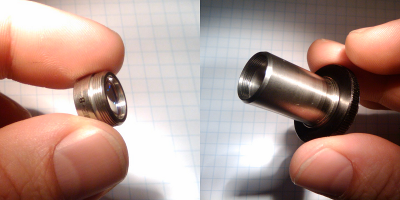This travesty was brought to my attention: Freaky Physics Proves Parallel Universes Exist, a worse-than-amateurish piece of what I hesitate to call scientific journalism by Fox News. I won’t waste space on why I consider the article so terrible, since someone else has already heaped scorn upon it better than I could: The Worst Physics Article Ever. Besides, it’s Fox News, and by now it shouldn’t be a surprise that they just write down whatever the hell they feel like.
I want to draw your attention to something mentioned in the article that I find much more worrying and insidious: the name Fred Alan Wolf. Wolf is a former physicist, turned crackpot, and anytime you hear his name mentioned in connection with legitimate science, alarms should start going off inside your head.
I recognized him as one of the “experts” featured in What The Bleep Do We Know, a piece of pseudoscientific rubbish that basically asserts that quantum mechanics allows us to control our destiny by wishful thinking. Just to give you some background, it’s a propaganda film made and paid for by students of Ramtha’s School of Enlightenment. This hotbed of charlatans is led by one J. Z. Knight, a cigar-voiced medium from Washington who claims to channel a 35000-year-old warrior named Ramtha from the lost continent of Lemuria.
To be fair, not everyone interviewed in the movie is a fraud. For example, there’s Professor David Albert, who, according to this Salon.com article, spent hours on camera explaining why the film’s physics was utter nonsense, only to see his contribution spliced and edited so as to imply the exact opposite.
Fred Alan Wolf, on the other hand, was not misrepresented in the least. Wolf, whose stage name is Dr. Quantum, has been on the lecture circuit since the 1980’s promoting quantum wishful thinking, according to an interview on the What The Bleep website. This claptrap has been popularized more recently by Rhonda Byrne and cronies in the bestseller The Secret, and what do you know, Wolf also appeared in the film version of that.
As far as I’m concerned, Dr. Quantum has about as much to do with real, falsifiable science as the iPad has to do with blue cheese. One might ask why I care so much. Let me put it this way: if Fox News not giving a crap about proper science reporting is a slap in the face of my profession, then the thought of Fred Alan Wolf being any journalist’s go-to guy for quantum physics is a kick in the nads.
PS. If you’re interested in what was actually achieved in the experiment, hysterical claims of time travel aside, here is the original press release from UCSB. Or see Nature 464, pp. 697–703 (2010).


